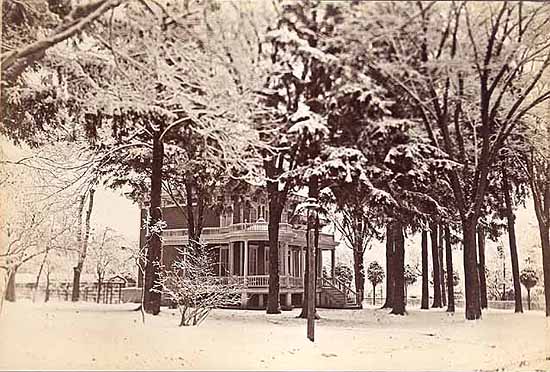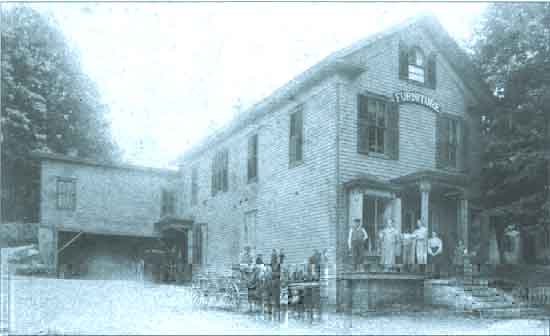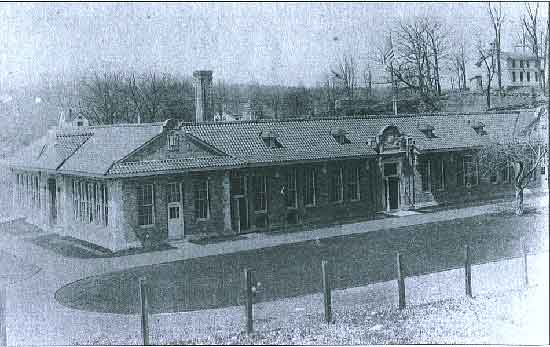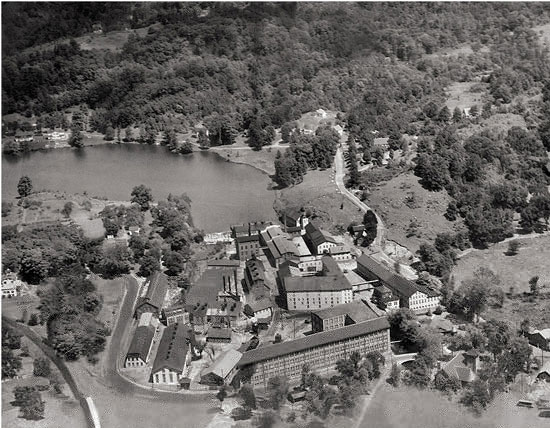|
A
special thank you to Lynne M. Barrelle, Grove Foote, Jack
Sanders, John Sturges, John Robie and many others from around
the World that have forwarded these images to me. A complete
history of the Gilbert & Bennett Manufacturing Co. in
pictures is a wonderful addition to the site.
Note
dial-up users: should the images take too long to load and
some pictures come up with an "X" hit refresh in
the your browser. I'm breaking up these pictures to keep downloads
to a minimum- 181 years of history is a bit too much for one
page.
Have
pictures you'd like to include? Email them to bcolley@colleyweb.com
or call me at 860-364-7475, I can scan the images if you'd
like and get them right back to you in less than a week.
Sponsor
Link:
Norwalk
River Watershed Assoc.

Two years after
the passing of Edwin Gilbert "The Miller Era" was
in full swing with the further expansion of the upper factory
buildings. The building show here is on North Main Street
and was built between 1908 and 1910. Many of the buildings
in the upper factory were built during the Miller Era- 1906-1954.

Major David H. Miller
(Left) became President with the passing of Edwin Gilbert.
He joined G&B in 1853 working his way from bookkeeper to director
and secretary in 1874, then becoming Secretary and Vice-President
in 1880. He held the position of President-Treasurer from
1906 until his death in 1915. He served the company 62 years.
Major Miller's son Samuel J. Miller (Right) was the next President
in 1915. He had joined the firm in 1869 as an office boy,
and became superintendent, secretary, general manager, director,
and vice-president. He served as president until his death
in 1936. He was with the company a total of 67 years!

North Main Street
1910. North Main St. housed many of the executives and managers
of G&B. The house on the near right was home to both Edwin
Gilbert and Samuel Miller. *It is interesting enough to note
that during this time period the elite of Georgetown, almost
exclusively people associated with the company, lived in the
midst of their workers. Ethnic neighborhoods did exist, but
employees were encouraged to occupy, or build houses next
to the mansions of the managers and officers. And while it
would be expected that the workers would live near the factory
it was most unusual to find upper-class houses in the same
location.

Edwin Gilbert House
on North Main St.

An early view of
Smith Street. South of the managers' residences these house
were built by the company's more affluent employees. The house
on the right would be torn down to make way for the new 107
in the 1950's. In addition to these two streets- Portland
Avenue and New Street were also a direct result of the factory's
success and the increasing number of employees at the factory.

Connery's Store
c. 1900. To serve the needs of the growing number of employees
of G&B there were quite a few small markets in the area.
Connery's and Perry's market were two of the earliest and
most popular. Connery's began in 1882 when Michael Connery
bought the general store for $240. The price included everything
but the dry goods part of the store, which was purchased several
years later. Connery's would serve the Georgetown community
until 1973. Other markets of note: A&P, Georgetown Market,
Kearn's Store, Tankus's Clothing store, Sabillio's market,
Hammelscamp's meat market, Perry had a second market over
by Kearn's store too.

Old G&B School
around 1912. This building was expanded several times to accommodate
the growing community.

Rare view of the
old and new G&B Schools. The company erected this school
building for the community in 1915-16 and deeded it to School
District #10. The fine up-to-date building was a model for
every school building committee to follow, and was a fitting
memorial to those who had the best interests of Georgetown
at heart. After a lapse of 100 years, the children of Georgetown
and Boston districts attended the same school as Georgetown
residents who did not live in the "Wilton section" could apply
for and be granted permission to attend. In the 1960's this
school was operated by the Wilton School Board, school district
number 10 was discontinued in 1964.

Rare view of the
G&B Buildings and Portland Avenue in the 1920's.

The Georgetown Volunteer
Fire Company was organized in May of 1928 by a group of men
who realized the need for fire protection in the community.
The first Fire House was a converted horse barn that was given
to the Volunteers by the Gilbert & Bennett Mfg. Co.

The company's business
suffered severely after the market crash of 1929. Not only
were sales extremely low, but more competitors were after
what little business was available. The directors decided
that modernization of buildings and equipment was essential
to compete profitably on the established product line and
to develop new products to beat out competitors. Shown above
is the wire cleaning and coating process.

High speed reverse
twisters, 10 times as fast as the previous twisters. Just
one example of the equipment added to modernize the factory
following the lean years following the market crash.

D. Henry Miller
III (Left) became the President of the company in 1936. The
son of Samuel J. Miller, he joined the company in 1904, was
appointed secretary in 1915, and director in 1932. D. Henry
Miller III, died in 1954. The Miller Era had ended however
the son-in-law of David H. Miller II, John H. Mulliken (Right)
was appointed President. Mulliken in 1937 became a director
and joined the firm in 1941 as the treasurer. He was in charge
of the company's modernization program and in 1947 was appointed
Vice President and Secretary.
In
the next section we showcase the company's
"experiment" in China, October 1992.
John
Moore Collection; Tryde
Photo's ; Redding
Times Photo's ; Tour
Present Day Georgetown
Back
to TOP | Back to Redding
Section | Back to Georgetown
Section
|

